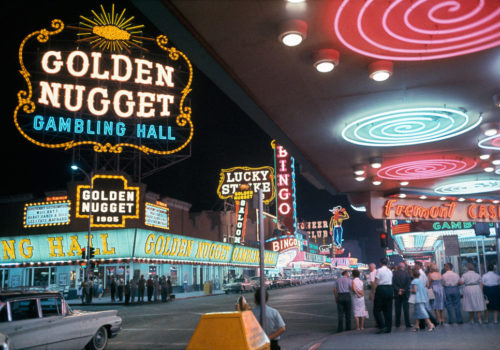Lee Friedlander, Joel Meyerowitz and the young Mike Brodie are good examples of how, in recent years, the road trip has become a genre in itself. The Open Road (Aperture) features 300 photographs from the likes of Ed Ruscha, Inge Morath, William Eggleston, Jacob Holdt, Stephen Shore, Bernard Plossu, Victor Burgin, Joel Sternfeld, Alec Soth, Todd Hido, Ryan McGinley and Justine Kurland. It all began with Walker Evans’s masterpiece, American Photographs, exhibited at MoMA in 1938, which he shot over the course of ten years in the Eastern United States during the Great Depression. Edward Weston is also partly responsible for the creation of the myth, with his photographs of national parks.
After World War II, the road trip began appearing in books, music and the movies. Enter Robert Frank with his Americans (1958) and Doug Rickard’s virtual road trips in The New American Picture (2010). All of this is on display in The Open Road, which chronologically traces the stories of 19 photographers, the evolution of American car culture and the idea of the road, with reflections on place, time and solitude. There’s the large billboards shot by Inge Morath in Las Vegas, Jacob Holdt’s villagers, Stephen Shore’s plains, Bernard Plossu’s typical scenes and the landscapes of Taiyo Onorato and Nico Krebs.
“What should happen at the end of a road trip?” asks David Campany. “A return to the status quo? A revolutionary new beginning? “A few minor adjustments to one’s outlook? Obviously it is not enough to drive West and arrive in the Promised Land… All is here, from the early thrills of what a new technology can show of familiar and strange subjects, to the existential crises, the euphoric interludes, the unexpected moments of poetic grace and polemic, and the unknown.”
BOOK
The Open Road: Photography and the American Road Trip
Aperture
10 x 11 1/2 in. (25.4 x 29.21 cm)
336 pages
300 duotone and four-color images
$52
















